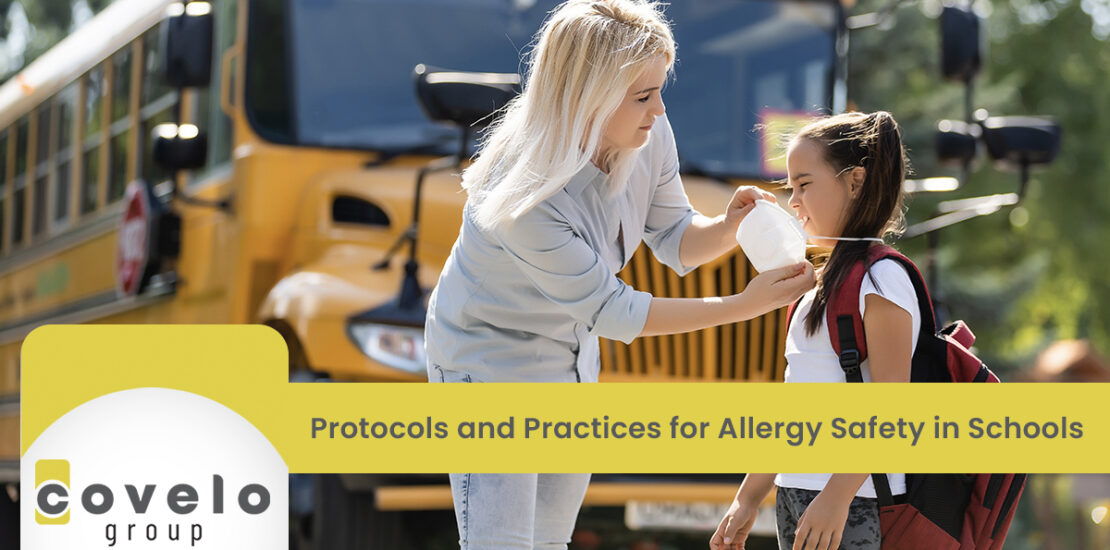- June 19, 2024
- Posted by: Covelo Group
- Category: Educational Services
No Comments

As reported by the American College of Allergy, Asthma and Immunology, allergies are a common condition for children in the United States.
- 4 percent of those under age 18 have allergic rhinitis, commonly known as hay fever.
- 4 percent have food allergies.
- 6 percent have skin allergies; namely, hives or eczema.
And for many, allergies trigger asthma.
Build Communication and Trust with Parents
Parents and guardians live with their children’s allergies 24/7. Everyone involved in a student’s education and well-being should partner with parents to ensure a watertight approach to allergy safety.
- Typically, allergy management is guided by a written school policy. This document spells out the planning and coordination of allergy care, staff, student and parent education, allergen exposure prevention, and emergency preparedness and response. Policies also must align with federal and state
- School nurses and teachers need to be aware of specific students and their allergies. A written statement of diagnosis from a child’s doctor is advisable to help direct care and avoid any confusion, for instance, between a food intolerance and a true allergy. Also, many food service departments require a diagnosis before substitutions can be made to accommodate allergies.
Focus on Education, Prevention and Preparation
- Prevention is the best medicine. A vital component of allergy management is education on the signs and symptoms of reactions, strategies to prevent exposure, and instruction on how to administer and activate care plans. The Allergy & Asthma Network provides a printable PDF of signs and symptoms.
- Ensure that staff know what to do in the event of an allergic reaction, even in students who do not have prior allergy histories. For instance, training should include the use of epinephrine devices. Most states allow schools to stock epinephrine, and all 50 allow students to self-carry epinephrine auto-injectors and albuterol inhalers.
About Student Healthcare Plans
There are four main types of plans used in school settings, which apply to allergy safety as well as other healthcare issues:
- Individualized Healthcare Plans: These outline care plans for students with complex, chronic health needs. They are written for use by school nurses.
- Emergency Action or Care Plans: These documents list specific steps to take in response to incidents including allergic reactions. As opposed to healthcare plans, they are written in layman’s terms for use by non-medical personnel.
- Section 504 Plans: Section 504 is a federal law that protects the civil rights of persons with disabilities. It also outlines the accommodations necessary for students to fully participate in school.
- Individualized Education Plans: IEPs are developed to ensure a child with an identified disability receives the specialized instruction and related services they need at school. IEPs may not be applied to students with allergies, unless they also have an educational disability.
Your Resource for Educational Services Jobs
As you build your career as an educator or school-based health professional, let Covelo Group be your expert resource for school safety practices, policies, protocols, and developments. Contact us today to tap into our extensive network.
